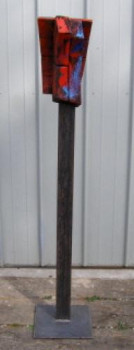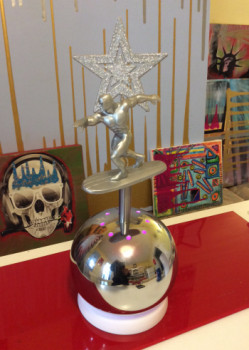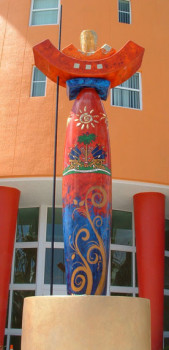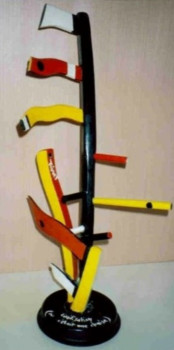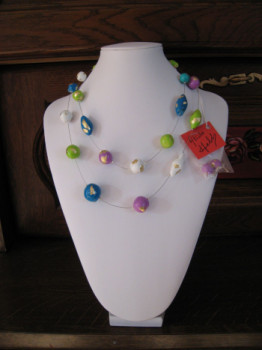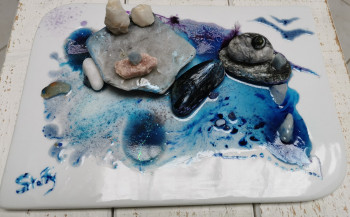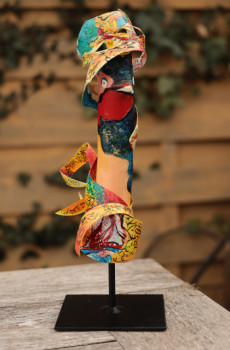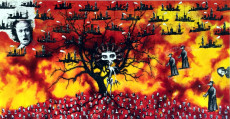
Joan Miró: inspiring biography of the Catalan artist, figure of surrealism and modernity
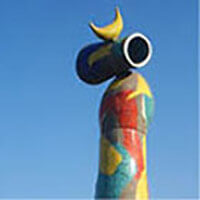
The Catalan artist Joan Miró (1893-1983) was first known as a surrealist painter. A self-taught jack-of-all-trades, the Spaniard actually experimented with numerous arts and artistic processes, in turn sculptor, engraver and painter. In 70 years of career, over 90 years of a busy life, he crossed and appropriates the artistic movements of the 20th century. Joan Mir&oac; is a major figure of surrealism and modern art in the fine arts, who knew how to find his own expression artistic. He leaves us an abundant and unique body of work: 2,000 paintings, 400 ceramics, 500 sculptures and no less than 5,000 drawings with collages, as well as immense works for public commissions. Joan Miró has something to inspire contemporary artists with a colorful, childish (even naive) and poetic style.
Under the influence of Cubism, Miró creates the « Catalan Fauvism » before becoming a figure of surrealism at the same time. Paris
As early as 1912, Miró visit to Barcelona a cubist exhibition and finds there; his vocation: painter. Very early on, he wants « kill the classic codes of art ». In 1913, the young painter signed his first portraits, then paintings in the same style. from 1915, under the influence of Cubism and Fauvism. Fauvism is made of strong colors and a search for quality. pictorial, more than figurative realism, as in the paintings of Matisse.
From 1915 to; 1919, the Spanish artist created the « Catalan Fauvism', an unprecedented synthesis of Cubism, Fauvism and its other modern influences from the beginning of the 20th century. He will be inspired in particular by Van Gogh (late impressionist who announced Fauvism and Expressionism ), of Gauguin (post-impressionist, he founded the Pont-Aven School) and German Expressionism. In 1917, the painter Miró meeting Picabia at Barcelona. First a dadaist, then a surrealist, the French painter and designer returns to his home country. Paris in 1918.
Miró moving to Paris in 1920, where he discovered the abundant artistic life of Montparnasse. His art will be lastingly influenced. by his friendly meetings, with Picasso (Cubist painter) and the surrealists, led by André Breton, but also by Dadaism and the avant-garde. Miró created paintings with some of his surrealist writer and poet friends, such as Paul Élouard, Alfred Jarry, Jacques Pré vert, Tristan Tzara and, of course, André Breton. It was through his writer friends that he discovered the world of art publishing and engraving, which he experimented with upon returning to Spain.
In 1920, Joan Miró enters a short period « retailer » or « precisionist', inspired by Italian primitive art (it's about realism, down to the smallest details). From 1922, he returned to more surrealist paintings, but giving equal importance to small and large elements. It starts at develop your own language to express yourself: made of symbols, shapes, straight lines, curves or with angles, called « Mironian calligraphy ».
From 1923, Joan Mir&oac; experiments and develops his own surrealist language
In 1923, Joan Miró returns to Barcelona and is mainly dedicated to; engraving and the sculpture. Surrealist sculptor, student of Galli (1932), then of Artigas (1944), and artist-engraver, Miró is an experimenter. He tests and mixes all possible processes (lithography, screen printing, carborundum, digital scanner, aquatint, woodcut, chalcography, intaglio, stencil...) and all supports (parchments, sewing patterns, newsprint, book covers, Vichy fabric...). Miró wants to test everything and open up the field of possibilities, pushing back traditional and technical limits. In engraving, he himself modifies his own presses to create new effects. In his paintings, he also uses collages; from 1933.
He signed the Surrealist Manifesto in 1924, with his friend André; Breton, leader of the movement. The latter will say of Miró that « “he is the most surrealist among us.” Surrealism highlights the exploration of the unconscious, particularly through the world of dreams. More than a transdisciplinary artistic movement, from graphic arts to literature, surrealism is an attitude linked to the discovery of Freudian theories. This state of mind consists of experiment, through painting and automatic writing for example, the expression of one's unconscious thoughts, without censorship of the conscious and the will. It's about letting go and completing your work as quickly as possible without thinking about the result you want.
Joan Miró thus expressed the recesses of his imagination, taking pleasure in the game and discovery. In this freedom enjoyable, the painter Miró plays with constraints, imposing instinctive associations of ideas at random. As a sculptor and engraver, he combines heterogeneous everyday objects and superimposes all kinds of materials, on all kinds of supports. As a painter, Miró has fun with stains and « diabolical accidents which lend themselves to so many adventures ».
Sometimes worrying, sometimes joyful, his paintings represent sketches of fanciful characters, strange shapes and symbols, ;s of his imagination and hallucinations. Removing plans and perspective, Joan Miró works in flat areas of bright colors, with characters, sometimes joyfully childish, sometimes menacing. the limit between dream and reality, he creates his fantastic universe populated by of recurring shapes and symbols. « A "wonderful painter", according to his friend Robert Desnos, he brings together birds, women, the sexes of men, comets, stars, etc. And although his paintings are increasingly pure and elliptical (but still representative), the humorous titles of his works bring poetry and meaning to the work. this joyful chaos.
The post-war period of Joan Miró : large, pure and colorful formats to suit your needs. the limit of abstraction
In 1943, he returned to settle in Spain, where he lived. he meets Adrien Maeght, the son of his friends Aimé and Marguerite Maeght. He is an art editor, passionate about through new technical processes and through experimentation, like Miró. In 1946, Adrien Maeght created his ARTE printing company, where he reserves a workshop and a press for printing. his engraver friend Joan Mir&oac;. In 1960, Miró creates a « Labyrinth » in the garden of the Maeght parents, with sculptures and a monumental celestial stained glass window.
In the 1950s, as a sculptor, Miró experiments with new sculpting processes to mix materials and assemble heterogeneous everyday objects. He is interested in urban furniture and the decoration of buildings and monuments. Miró delivered several commissions for major works, such as before UNESCO (“Two fantastic characters”, 1976). After having trained lots of colored ceramics, he started to create them. bronze sculpture, with ancestral Chinese techniques.
In painting, to silence his anxieties, he turns to dreamlike themes and to pure work. colors, which are almost sufficient for each other; themselves. Joan Miró is at; the search for simplicity, simplicity, purity and simplicity. shapes and symbols, which are almost supplanted by the intensity of the colours. Representations of reality or the world of dreams are more and more elliptical, close to abstraction, but the shapes always represent something in Miró. The result is intense, stripped down and refined. and poetic, as with his « Constellations, a starry sky, painted during the Spanish Civil War to calm his anxieties.
Miró discover the United States through from 1947, and at the same time naive art, inspired by expressionism, Jean-Michel Basquiat and the pop-art of Andy Warhol, with his intense treatment of colors. In the 1960s, he painted very large abstract formats in bright colors, inspired by American painting. The blue of the sky and the sea will become its color. He reaches fullness in his blue series: « Blue I», «Blue II» and « Blue III », monochrome triptychs painted in 1961.
Joan Miró bequeathed during his lifetime a large part of his works the Miró Foundation, inaugurated in 1975 at Barcelona. Born under the Franco regime (which fell in 1977), the foundation brings a new vision: that of promoting contemporary art, and not just conserving heritage. In 1980, Miró receives the « Gold Medal for Merit in Fine Arts », from the Spanish Ministry of Culture, in tribute to creativity rich and eclectic work of one of the greatest artists of the 20th century. It turns off when Mallorca in 90 years old, recognized and praised, from Chicago to Barcelona, via Houston and Senlis (next to Reims), cities which will receive his latest orders, bronzes and stained glass windows.
Découvrez quelques oeuvres inspirées de Miro
